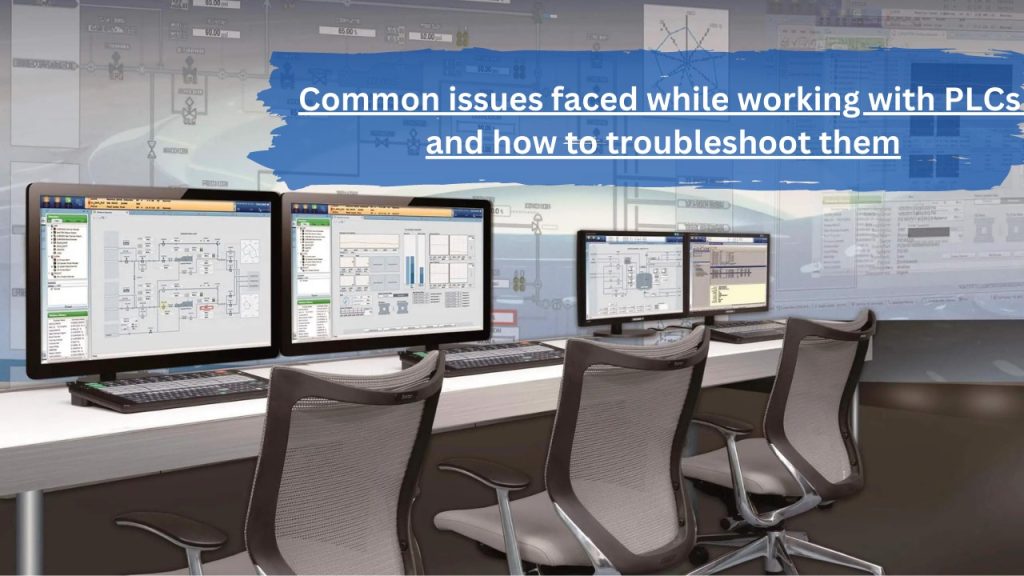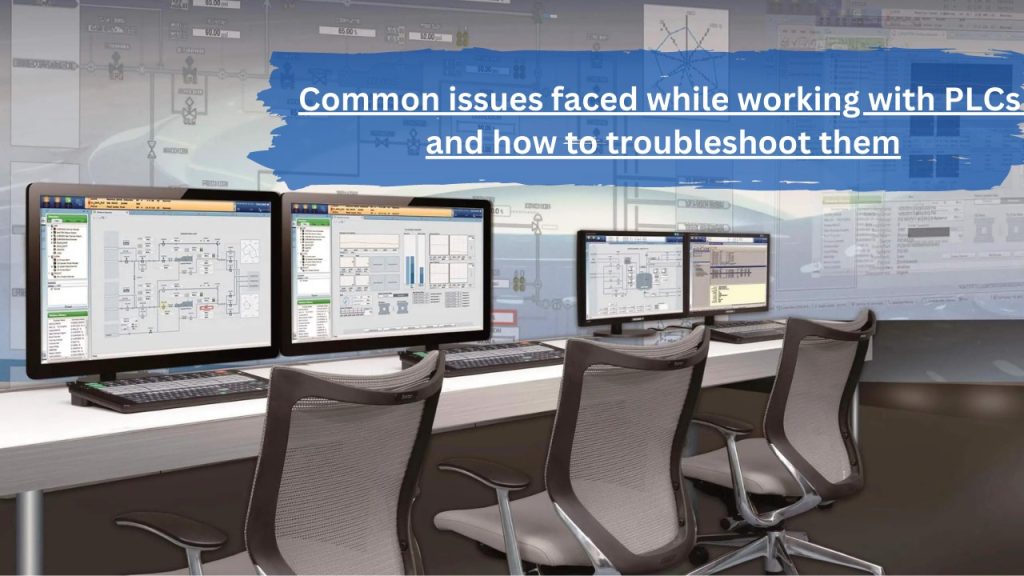

PLCs are a crucial part of industrial automation systems, but they occasionally experience problems that need to be fixed. Here are some typical problems encounter when dealing with PLCs and some advice on how to solve them:
1. Communication Issues:
One of the most common issues with PLCs is communication problems, which can occur due to faulty wiring, incorrect settings, or issues with network infrastructure. To troubleshoot communication issues, check the wiring connections, verify that the correct communication settings are configure, and check for any issues with network hardware.
One of the most frequent difficulties encountered while dealing with Allen Bradley PLCs is poor communication. These problems can arise for a number of causes, including defective wiring, inappropriate configurations, or problems with the network architecture.
Inadequate or faulty wiring can interfere with communication between the PLC and other networked devices. Signal noise or weak signals may occur from improperly grounded wiring or a faulty connection, which may cause communication failures. Check the electrical connections to make sure they are safe and correctly grounded in order to fix this problem.
2. Power Supply Problems:
Power supply issues can cause the PLC to fail or to behave erratically. To troubleshoot power supply problems, check the power supply voltage, check the wiring connections, and verify that the power supply is capable of providing enough power to the system.
The PLC may malfunction or act erratically due to issues with the power supply. Voltage fluctuations, overloading, and shoddy wiring connections are a few of the frequent causes of power supply issues.
Voltage fluctuations can make the power supply fall below or go over the necessary voltage, which can result in system failure. This may be brought on by outside events like lightning strikes, power surges, or other electrical disturbances. The power supply’s voltage level should check to make sure it is within the recommend range in order to troubleshoot this problem.
3. Faulty I/O Modules:
I/O modules are responsible for communicating with external devices, and faulty modules can cause issues with the system. To troubleshoot faulty I/O modules, check the wiring connections, verify that the correct module is installed, and check for any errors in the module configuration.
The system’s I/O (Input/Output) modules are in charge of interacting with external devices, and defective modules can lead to problems. I/O modules that are defective might have a number of common causes, including as wiring issues, installation issues, and setup mistakes.
Wiring issues Communication problems between the I/O module and other networked devices can be brought on by bad or incorrect wiring. Signal noise or weak signals may occur from improperly grounded wiring or a faulty connection, which may cause communication failures. Check the electrical connections to make sure they are safe and correctly grounded in order to fix this problem.
4. Programming Errors:
Programming errors can cause the 1766-L32AWA MicroLogix 1400 PLC to behave erratically or to fail altogether. To troubleshoot programming errors, review the program logic, check for any syntax errors, and verify that the program is correctly configure.
When a program contains syntax problems, such as misspell or omitted commands, variables, or operators, this is referred to as a syntax error. These mistakes may result in the program failing or acting strangely. Check the computer code for syntax problems and fix them to solve this problem.
When a program contains logical errors, such as erroneous or missing conditions, loops, or calculations, they are referred to as logic errors. These mistakes may result in the program failing or acting strangely. Review the program logic and fix any flaws to resolve this problem.
6. Environmental Factors:
PLCs can be affect by environmental factors such as temperature, humidity, and vibration. To troubleshoot environmental issues, check the operating conditions of the system and verify that the PLC is rate for the environment in which it is install.
Excessive temperatures may result in the Rockwell Automation PLC malfunctioning or behaving strangely. When the PLC is install in a hot environment, parts may overheat and stop working. Similar to this, installing the PLC in a cold environment can make the parts brittle and prone to failure. Make sure the PLC is install in a temperature-controlled area and that its working temperature is within the manufacturer’s recommendations before beginning to troubleshoot this problem.
Moisture can cause corrosion on the PLC components, leading to system failure. It can also cause electrical shorts and other problems. To troubleshoot this issue, ensure that the PLC is install in a dry environment and that any sources of moisture are address.
Also Read: How Is Data Science Used In Cyber Security?
7. Hardware Failure:
Hardware failure can occur due to issues with components such as processors, memory modules, or I/O modules. To troubleshoot hardware failure, check the system diagnostics, verify that the components are correctly install, and replace any faulty components.
PLC problems might cause by hardware failure. The central processing unit (CPU), input/output (I/O) modules, power supply, and communication modules are only a few of the hardware parts that make up the PLC, and any one of them could malfunction.
The PLC won’t work if the CPU malfunctions. Examine the CPU status indicators and make sure it is receiving power to resolve this problem. The CPU might need to replace if it’s not working. Overall, troubleshooting issues with PLCs requires a systematic approach and a good understanding of the system components and operating conditions. By identifying the root cause of the issue and taking appropriate corrective action, many problems with PLCs can resolve quickly and effectively.
